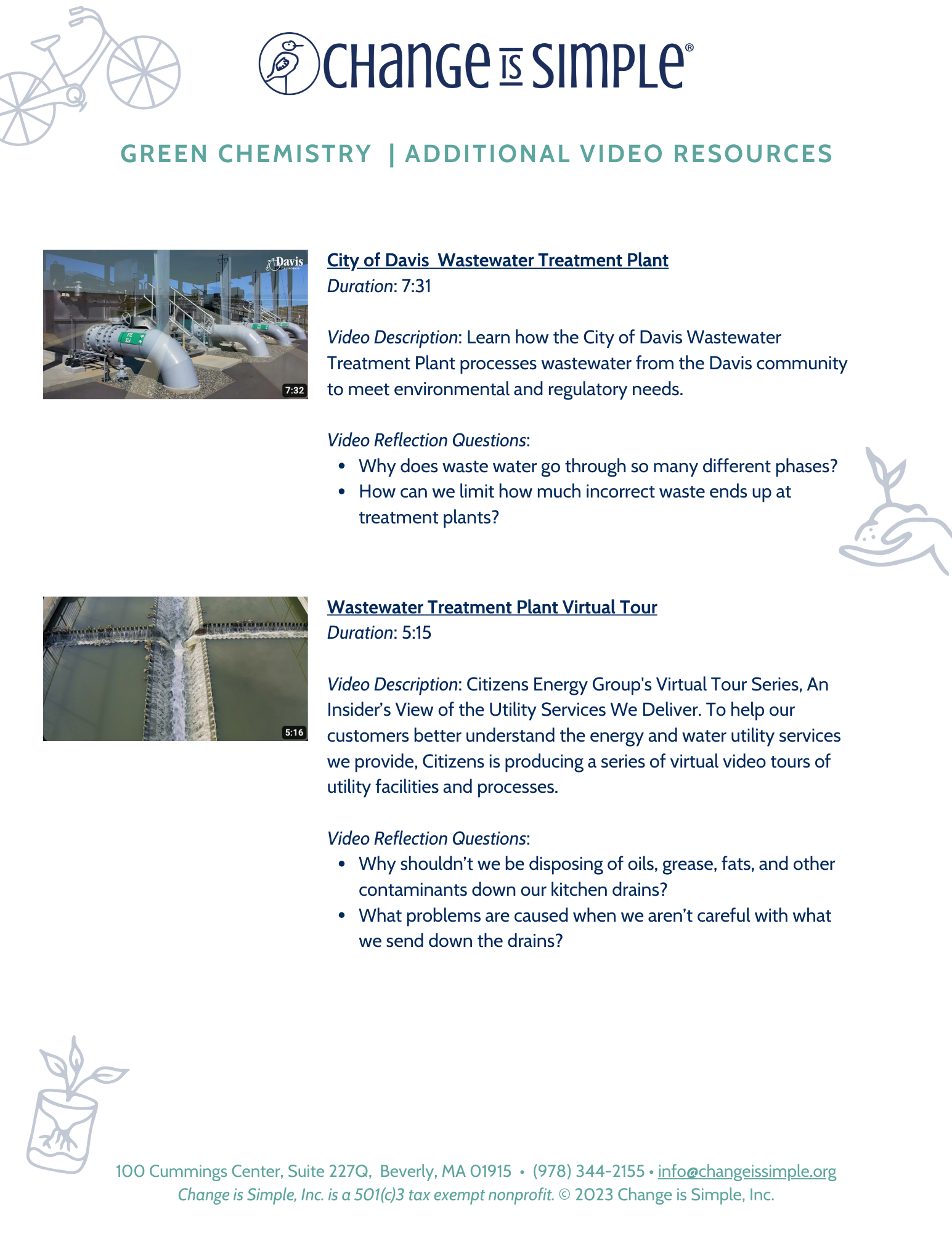Green Chemistry
Lesson Objectives:
At the end of the workshop, students will be able to:
Understand the concept of green chemistry and its importance in reducing environmental impact by exploring the chemicals present in everyday products.
Identify harmful chemicals commonly found in household items and explain their impact on water quality and ecosystem health.
Essential Questions:
What is green chemistry and why is it important?
How do chemicals in our everyday products affect the water cycle?
How can we make safe products for our school using green chemistry principles?
Explore our resources
Click on the images to access each resource (available as a PDF or webpage)
DIY Sustainable Products
In this activity, students will have the opportunity to create their own sustainable cleaning products for home or the classroom.
Lesson Reflection
Print and send home this reflection activity to show families what their student learned.
Background Information
Water is a Natural Resource
Water is one of the most important natural resources. We use it for many different purposes in our everyday lives, and having access to clean, healthy water is important for human health. For those living in Massachusetts, your water likely comes from a reservoir, lake, stream, or groundwater soruce. This water gets treated at a treatment plant and then pumped through underground pipes to your home!
Polluted Water
Water can get polluted from various sources like roads, construction sites, and farms. When it rains, water can pick up pollutants like oil from roads, sediment from construction sites, and fertilizers or pesticides from farms. This polluted water can flow into rivers, lakes, and oceans, harming plants and animals that live there. It also means the treatment plants have to work even harder to clean the water before it reaches our homes.
Our Role in Water Pollution
But it's not just chemicals from these sources that can pollute our water. Sometimes, chemicals from our everyday products, like soaps, cleaners, and even medicines, can also end up in the water. Even though water from our drains goes through treatment plants to remove pollutants, not all chemicals are easy to remove. Some chemicals, called "persistent pollutants," can stick around in the water for a long time, causing harm to aquatic life and even making the water unsafe for us to drink or swim in. Green chemistry helps by making products with ingredients that are less harmful to the environment. For example, instead of using harsh chemicals in soaps and cleaners that can be tough to remove from water, green chemistry uses ingredients that break down more easily and don't cause as much harm to our waterways. This way, we can help keep our water clean and safe for plants, animals, and people.





